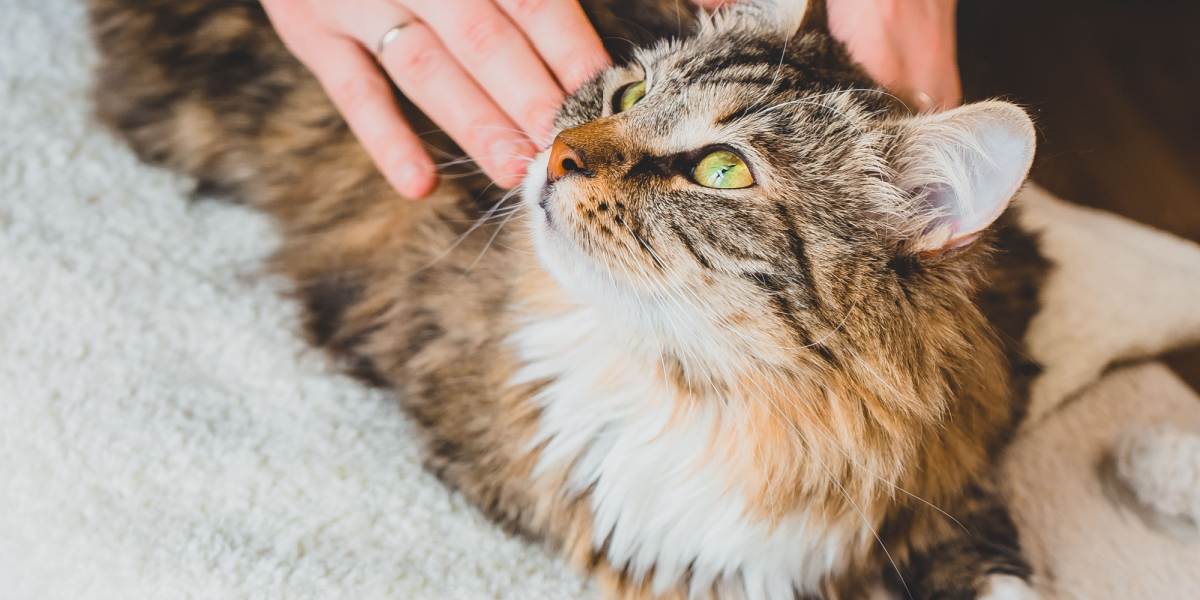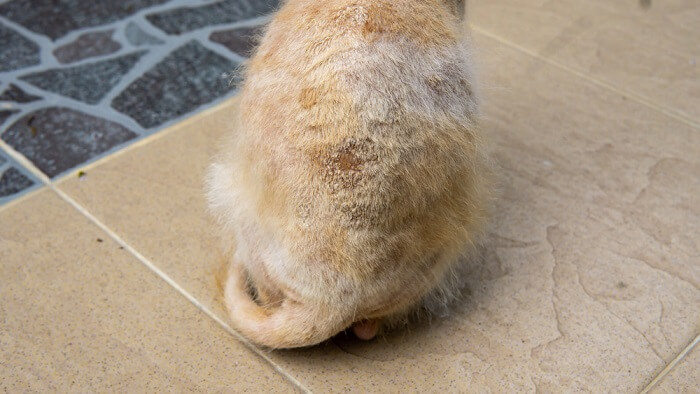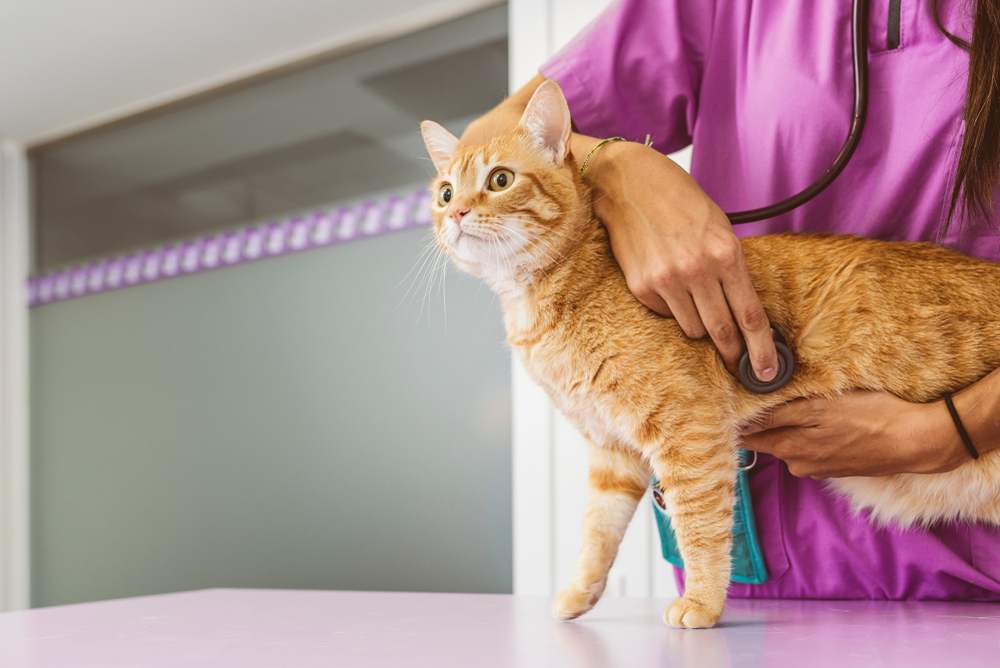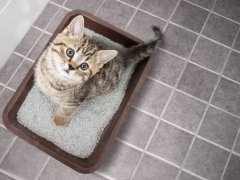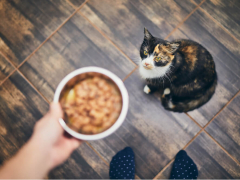Have you ever seen your cat’s back twitching or having a spasm? It can look a little concerning. Felines are very responsive to touch along their backs due to a sensitive muscle layer along their backs, so mild and occasional twitches along the back and flanks can be perfectly normal.
Cats have a sensitive layer of muscle along their backs which can twitch when they are excited, trying to communicate, or when being touched.
Back twitches can also be caused by skin diseases such as parasites, pain, seizures, an overactive thyroid, or feline hyperesthesia syndrome.
Feline hyperesthesia is an uncommon neurological disease in cats, causing huge skin sensitivity with rippling skin, anxiety, intense licking and biting, frantic movement, and dilated pupils.Key Takeaways
However, more severe twitches, muscle spasms, and other symptoms such as frantic licking, tail chasing, and extreme sensitivity can be due to an underlying medical condition, such as feline hyperesthesia syndrome, pain, parasites, or seizures. If your cat seems uncomfortable, has changed their behavior, and has muscle twitches along their back, take them to see a veterinarian.
Also Read: Why Do Cats Arch Their Backs? Top 8 Reasons
Reasons Why Your Cat’s Back Twitches
Let’s go through some common causes of cats having twitchy backs.
1. Normal Behavior for Felines
Cats have a thin muscle layer called the “cutaneous trunci.” This muscle can move on its own in response to physical stimuli such as stroking or in reaction to emotions such as excitement. If your cat’s back sometimes twitches when you pet them, or when they see a bird out of the window, this is perfectly normal. Cats also use body language to communicate, which may include small movements of various muscles in the body.
2. Pain
Pain can cause twitching and muscle spasms along the back. This may include any painful condition of the back, limbs, or tail, including arthritis in the spine or hips, abscesses, wounds, nerve damage, or anal gland disorders. Muscle twitching may be the only sign, as cats are very good at concealing pain. You may also see other signs such as your cat licking at the affected area, limping, reacting badly to touch or hiding away, and having changes to daily habits such as eating and toileting.
3. Skin Disease
Many skin diseases affect a cat on a deeper level, leading to muscle twitching.
Any disease affecting the skin may cause itching (pruritus), which can present as muscle twitching. You may also see excessive licking and scratching, overgrooming, hair loss (alopecia), rashes, scabs, and sore lesions on the skin. Various dermatological conditions can be itchy, including parasites, infections, and allergies. Flea allergy dermatitis (FAD), where cats react badly to flea saliva, is a common condition causing intense itchy and sore skin, often across the back and around the tail base.
4. Seizures
Cats can suffer from epilepsy and other seizure disorders. Cat owners often think of fits as dramatic, whole-body events, but those are grand mal seizures. The less obvious ones are petit mal or “absence seizures.” These are much more subtle, with signs such as muscle twitching, spasms, a vacant stare, or rapid blinking.
5. Feline Hyperesthesia Syndrome (FHS)
Also called rolling/rippling skin syndrome, twitchy cat disease, neuritis, and atypical neurodermatitis, feline hyperesthesia syndrome is a poorly understood, but severe, neurological disorder in cats. The classic sign is rippling and twitching of the skin along the back, near the base of the tail. However, other symptoms of feline hyperesthesia syndrome include:
- Dilated pupils
- Extreme sensitivity to touch (many will bite when pet)
- Excessive biting and licking at their back, flanks, and limbs
- Erratic jumping and racing around
- Tail-chasing
- Behavioral signs including anxiety and excessive vocalization
- Seizures (rare)
The exact cause of FHS is unknown. Certain oriental breeds seem to be predisposed to the condition, including the Siamese, Persian, and Abyssian. Possible triggers include dermatological diseases such as flea allergic dermatitis, neurological disease, toxin exposures, or psychological conditions such as obsessive-compulsive disorder. For this reason, a diagnosis of feline hyperesthesia syndrome is often made by exclusion of other causes of this behavior.
6. Hyperthyroidism
Cats with an overactive thyroid gland usually have the classic symptoms of increased appetite, thirst, and urination alongside weight loss. However, poor coat condition and muscle twitching can also be signs.
When to Call the Vet
A vet can check a cat for deeper underlying issues causing muscle spasms, which may not be readily apparent.
The occasional muscle twitch or spasm in your cat is nothing to worry about, especially if they are otherwise well. However, if you note the skin along your cat’s back twitching or rippling a lot, or if they show other symptoms such as biting, scratching, and licking at the skin, behavioral changes, skin lesions, sensitivity to touch, restlessness or anxiety, then it is recommended to visit a veterinarian.
The vet will be able to perform a full physical examination. They may also run diagnostic tests, such as a complete blood count, x-rays, and skin tests for allergies and parasites.
Treatment
Treatment will depend on the cause and severity of symptoms. Fleas and mites can be treated with anti-parasite medications, arthritis, and other painful conditions may need analgesics and anti-inflammatories and fits can be managed with anti-epileptic drugs such as phenobarbital.
FHS can be difficult to treat and often multiple strategies are needed. Environmental and stress management is key, as well as nutrition and behavioral strategies. Some success has been had with anti-seizure and neurological medications such as phenobarbital and gabapentin.
Cats can have twitchy backs for all sorts of reasons. Mild cases may just be perfectly normal feline behavior due to their sensitive muscle anatomy, but more severe cases are likely to have an underlying cause. Parasites, pain, and seizures are all possible. Feline hyperesthesia syndrome is a potential cause in young cats, with its classic ‘rippling skin’ effect. If your cat has a twitchy back, especially alongside other symptoms, visit your veterinarian for advice.
Related Conditions
- Atopic Dermatitis in Cats: Causes, Symptoms & Treatment
- Cat Intestinal Parasites: Causes, Symptoms, & Treatment
- Epilepsy In Cats: Causes, Symptoms, & Treatment
Frequently Asked Questions
Why is my cat’s back twitching?
Cats have a sensitive, thin muscle along their back that can twitch if petted or when excited. However, more severe twitching can be caused by certain health conditions such as parasites, skin disease, pain, neurological disease, and feline hyperesthesia syndrome.
Why does my cat’s back ripple?
Rippling skin disorder, also known as twitchy cat disease or feline hyperesthesia syndrome, is a neurological condition in cats that causes a characteristic rippling effect of the skin. Other symptoms include frantic licking and biting at the skin, sensitivity to touch, dilated pupils, anxiety, and racing/jumping around.
Is feline hyperesthesia common?
Thankfully, feline hyperesthesia syndrome is fairly rare in cats. It is more commonly seen in oriental breeds such as the Persian, Abyssian, and Siamese and is usually diagnosed in young adult cats.
